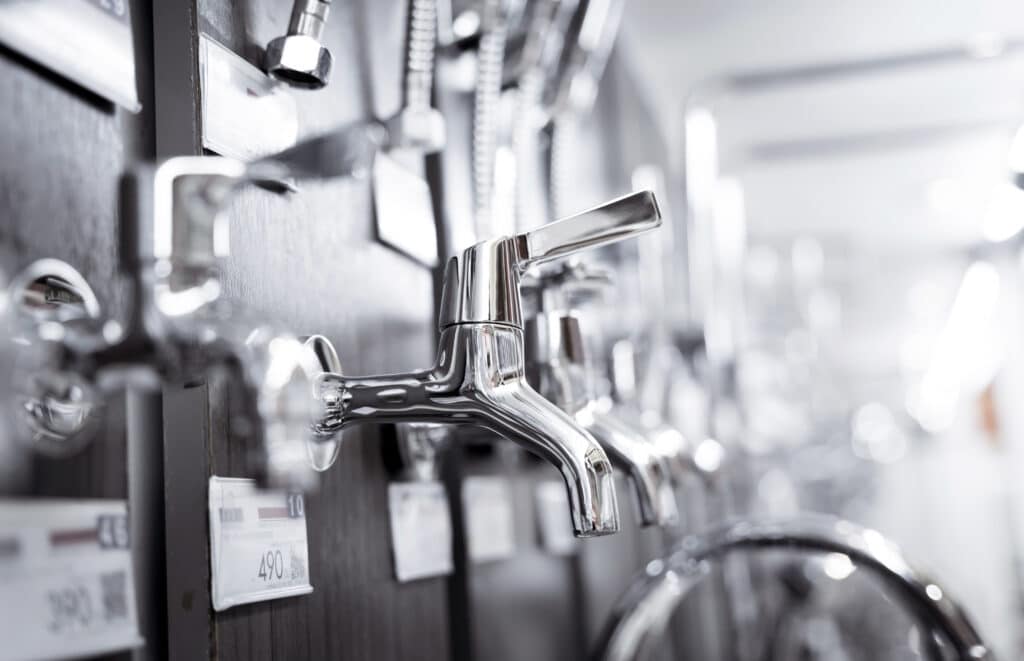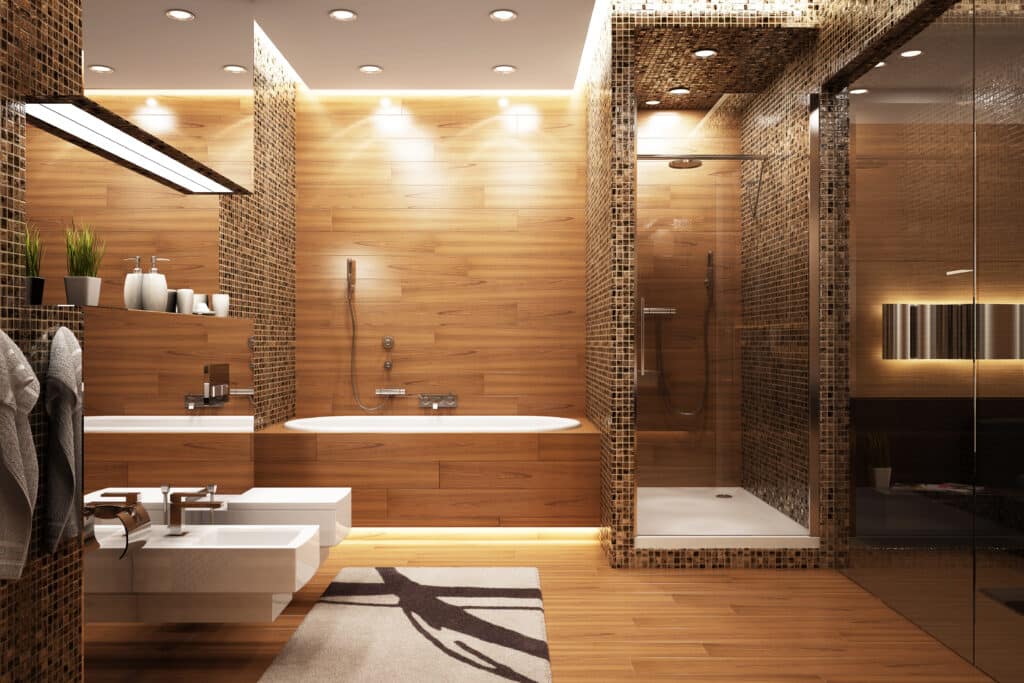As our population ages and our understanding of accessibility needs grows, it’s more important than ever to design bathrooms that are functional, stylish, and accommodating for everyone. Whether you’re renovating for yourself, a loved one, or planning for future accessibility, creating an inclusive bathroom space can benefit everyone who enters. In this guide, we’ll explore the key components of accessible bathroom design, ensuring that your next bathroom makeover is both beautiful and barrier-free. So, let’s roll up our sleeves (but not too high, we’re talking about bathrooms here) and dive into the world of accessible bathroom designs!
- Wide Doorways and Open Floor Plans
A spacious bathroom is not only a luxury, but it’s also a necessity for those using wheelchairs, walkers, or other mobility aids. Wider doorways (at least 32-36 inches) and open floor plans can make maneuvering in and out of the bathroom a breeze. And hey, who doesn’t appreciate a little extra elbow room when brushing their teeth?
- Roll-In Showers and Accessible Bathtubs
When it comes to bathing, accessibility is key. Roll-in showers with a no-threshold or low-threshold design make it easy for those using wheelchairs or walkers to enter and exit the shower safely. Add grab bars, a fold-down shower seat, and a handheld showerhead for an even more enjoyable experience. And if you’re a bathtub enthusiast, don’t worry – there are plenty of accessible tub options, like walk-in tubs or tubs with built-in transfer benches, that can make soaking a relaxing and stress-free experience for everyone.
- Slip-Resistant Flooring
Nobody wants to take a tumble in the bathroom, but slippery floors can be especially hazardous for those with limited mobility. To keep everyone on their feet (or wheels), choose slip-resistant flooring options like textured tiles, vinyl, or rubber. Your joints (and your loved ones) will thank you.
- Easy-to-Reach Storage
When designing an accessible bathroom, it’s important to think about the little things – like where you’ll store your towels and toiletries. Opt for easy-to-reach storage solutions, like open shelves or lower cabinets, that allow for effortless access without the need for stretching or bending. Bonus points for style if you choose sleek, modern designs that double as décor!
- Adjustable and Easy-to-Use Fixtures
Faucets and shower controls should be easy to operate for everyone, regardless of their abilities. Lever-style handles or touchless faucets can make turning the water on and off a cinch, while thermostatic or anti-scald valves can help prevent accidental burns. And for an extra touch of luxury (and accessibility), consider installing a height-adjustable showerhead that can be easily adjusted to suit each user’s needs.
- Grab Bars with Style
Gone are the days when grab bars were purely utilitarian and bland. Today, you can find grab bars in a wide range of styles, finishes, and materials that blend seamlessly with your bathroom’s aesthetic. Don’t be afraid to make a statement with your grab bars – after all, they’re there to provide support and safety, so why not make them look fabulous while they’re at it?
- Proper Lighting
A well-lit bathroom is essential for everyone, but it’s especially important for those with vision impairments or limited mobility. Make sure your bathroom is illuminated with a mix of ambient, task, and accent lighting to reduce glare and shadows while providing ample brightness for grooming and other activities. And don’t forget to add nightlights or motion-sensor lighting for added safety during those late-night bathroom trips.
- Accessible Sinks and Vanities
When it comes to sinks and vanities, accessibility is all about the height and clearance. Wall-mounted or pedestal sinks can provide ample knee clearance for wheelchair users, while adjustable-height countertops can cater to the needs of people with varying mobility levels. Be sure to choose faucets with easy-to-operate handles and install mirrors that can be tilted or adjusted for improved visibility for all users.
- Comfort Height Toilets
Standard toilets can be challenging for people with mobility issues, so consider installing a comfort height toilet that’s a few inches taller than the average commode. These taller toilets make sitting and standing easier, and when paired with well-placed grab bars, they can significantly improve safety and comfort in the bathroom.
- Personal Touches
Lastly, don’t forget to add those personal touches that make your bathroom feel like a welcoming and inclusive space. Opt for soft, non-slip bath mats, easy-to-grasp towel bars, and other accessories that suit your style while catering to the needs of all users. By creating an accessible bathroom that’s both functional and beautiful, you’ll ensure that everyone who enters can enjoy a comfortable, barrier-free experience.
Conclusion:
Designing an accessible bathroom doesn’t mean sacrificing style or luxury. By incorporating these essential elements, you can create an inclusive space that’s both functional and stylish, meeting the needs of people with disabilities or limited mobility while enhancing the overall aesthetic of your home. With thoughtful planning and a dash of creativity, your bathroom can become a sanctuary for all, ensuring everyone can experience the comfort and relaxation that comes with a well-designed bathroom oasis.




